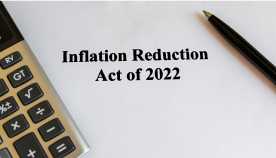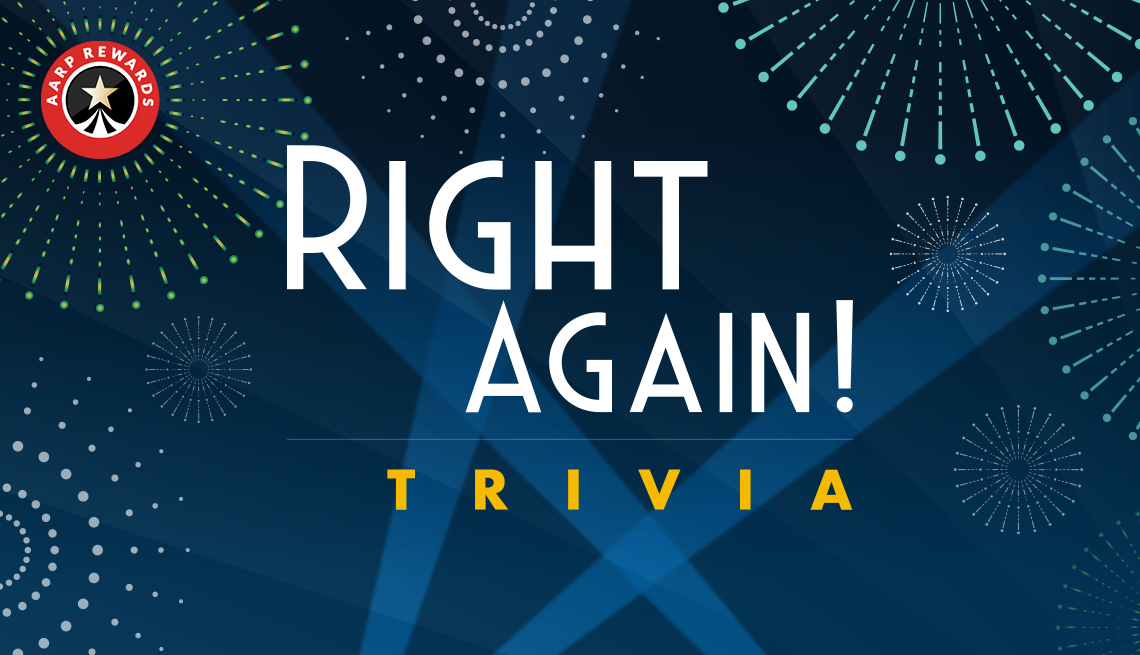AARP Eye Center
- AARP Online Community
- Games
- Games Talk
- SongTheme
- Games Tips
- Leave a Game Tip
- Ask for a Game Tip
- AARP Rewards
- AARP Rewards Connect
- Earn Activities
- Redemption
- AARP Rewards Tips
- Ask for a Rewards Tip
- Leave a Rewards Tip
- Caregiving
- Caregiving
- Grief & Loss
- Caregiving Tips
- Ask for a Caregiving Tip
- Leave a Caregiving Tip
- Help
- Membership
- Benefits & Discounts
- General Help
- Entertainment Forums
- Rock N' Roll
- Let's Play Bingo!
- Leisure & Lifestyle
- Health Forums
- Brain Health
- Conditions & Treatments
- Healthy Living
- Medicare & Insurance
- Health Tips
- Ask for a Health Tip
- Leave a Health Tip
- Home & Family Forums
- Friends & Family
- Introduce Yourself
- Housing
- Late Life Divorce
- Our Front Porch
- Money Forums
- Budget & Savings
- Scams & Fraud
- Retirement Forum
- Retirement
- Social Security
- Technology Forums
- Computer Questions & Tips
- About Our Community
- Travel Forums
- Destinations
- Work & Jobs
- Work & Jobs
- AARP Online Community
- Home & Family Forums
- Our Front Porch
- Re: WHAT'S SPECIAL ABOUT TODAY?
WHAT'S SPECIAL ABOUT TODAY?
- Subscribe to RSS Feed
- Mark Topic as New
- Mark Topic as Read
- Float this Topic for Current User
- Bookmark
- Subscribe
- Printer Friendly Page
- Mark as New
- Bookmark
- Subscribe
- Mute
- Subscribe to RSS Feed
- Permalink
- Report
WHAT'S SPECIAL ABOUT TODAY?
Today is March 24th and it is:
World Tuberculosis Day
World Tuberculosis Day is a worldwide event that aims to raise public awareness about tuberculosis and the efforts made to prevent and treat this disease. This event is held on March 24 each year and is promoted by organizations such as the World Health Organization (WHO).
March 24th marks the day in 1882 when Dr. Robert Koch detected the cause of tuberculosis--the TB bacillus. This was a first step towards diagnosing and curing tuberculosis. World Tuberculosis Day can be traced back to 1982, when the International Union Against Tuberculosis and Lung Disease launched World TB Day on March 24 that year, to coincide with the 100th anniversary of Dr. Koch’s discovery.
**********************************************
I plan on posting interesting tidbits about each day/date of the calendar. I hope others will add to it as well. It can be related to any subject as long as it happened on or is correlated in some way with that particular date.
- Mark as New
- Bookmark
- Subscribe
- Mute
- Subscribe to RSS Feed
- Permalink
- Report
U.S.National Financial Awareness Day 2019 – August 14
How much would you like to bet that most people don’t know August 14 is National Financial Awareness Day?
It’s more important than you think. And plus, what’s more fun than financial independence? First off, think about that great feeling you get when you don’t have the looming specter of debt hanging over you. Also, sound financial decisions can really make a difference down the road. Remember, retirement is a time to take all those vacations you couldn’t when you were working the daily grind. Because money is important to our overall peace of mind, Financial Awareness Day is a great time to review where you are now and where you’re going financially. Don’t let bad financial decisions ruin the best years of your life!
National Today News: New Apple Card generates lots of interest
National Financial Awareness Day - History
1959
Put it on plastic
American Express introduced its first credit card in 1958 and the following year releases the first plastic credit card.
1950
Check, please
Frank McNamara and Ralph Schneider introduce the Diners Club Card as an alternative to cash. It has 20,000 cardholders in a year.
1946
Charge ahead
John Biggins, a banker in Brooklyn, introduces the "Charg-It" card, believed to be the first bank card. (Customers used it at local businesses, who then forwarded the bill to the bank.)
How to Observe National Financial Awareness Day
Invest
Got some money burning a hole in your pocket? Instead of spending it on some fleeting luxury, why not get in on some of that sweet return-on-investment action? Very rarely do you get the chance to spend your money on something that gives a bit back — well, unless you take a trip to Vegas, but those odds are for suckers. In the end playing it safe is always sexier than spending it all. Use National Financial Awareness Day as an excuse to start investing. It’s sure to pay off!
Take a trip to the U.S. Mint
What better way to celebrate money than by finding out how it’s made? There are four U.S. mint locations: Philadelphia, Denver, San Francisco and West Point. If pennies aren’t quite as pretty as paper to you, head down to the U.S. Bureau of Engraving and Printing or BEP for short. Not only do they offer tours and rare currency products, but you can take any of those ratty dollars that accidentally got tossed in the dryer and redeem them for free. How’s that for smart money?
Get smart about your money
National Financial Awareness Day is the perfect opportunity to make a budget. We know, we know, it’s not an attractive task but it’s so important. Find out where you spend your money by making a spreadsheet or using one of the many online services and apps that will do it for you. The numbers may shock you but that’s okay — knowledge is power!
Why National Financial Awareness Day is Important
It celebrates Easy Street
As the saying goes, why work for your money when you can make it work for you? Sometimes in the seemingly endless race to chase that paper, we forget that we don’t always need to take the uphill course. With the right knowledge, you can make the road to riches far less bumpy and a lot more scenic. Sound investment practices can help you spend less time working and more time enjoying your life.
It teaches us that finances don’t have to be confusing
In the land of the blind, the one-eyed man is king and if there's one thing most people are clueless about, it’s finance. There’s no downside to having a bit of financial literacy in life. It’s a subject many people find daunting, but taking the initiative to learn how money works will make all your peers green with envy. Just like everyone flocks to that one mechanically-inclined friend when their car breaks down, you’ll be that guy — but for money. Plus, when your car breaks down you can just buy a better one!
It reminds us to prepare for the unforeseeable future
They say money can’t buy you happiness. Perhaps — but not having money can sure bring you a lot of sadness. That’s why it’s so important to make sound investment decisions now so you’re not suffering later. You never know what kind of pitfalls life may throw your way but there’s no better safety net than having a nice contingency fund in your pocket.
- Mark as New
- Bookmark
- Subscribe
- Mute
- Subscribe to RSS Feed
- Permalink
- Report
TODAY IS......
INTERNATIONAL LEFT HANDERS DAY- August 13
International Left Handers Day on August 13th recognizes all those individuals who have mastered using their left hand in a right-handed world. We take our hats off to you – left-handed!
Approximately 10% of the population are southpaws. Scientists don’t know why a person develops left-handedness. But it’s more likely a child will be left-handed if one parent is a lefty, too. Parents of left-handed children used to force them to use their right hands. In the eyes of right-handers, the predominant use of the left hand seemed evil. Parents feared their communities would shun their children. While we accept left-handedness more readily than days gone by, its occurrence hasn’t increased.
Famous Cartoonist Joe Wos, founder of mazetoons, states that his favorite day to celebrate is International Left Handers Day, being a lefty himself.
Many lefties seek to blend in because they will stand out soon enough. Their unique quality makes them feel awkward. They bump elbows or seem like a klutz. However, in a world designed for the right-handed, those who are other dominant adapt quite well. For example, eight United States presidents were left-handed, including Ronald Reagan, George H.W. Bush, Bill Clinton, and Barack Obama. Would the Sistine Chapel and the Mona Lisa stand the test of time if Michaelangelo and Leonardo de Vinci had been right-handed?
Left Handers Day recognizes the uncommon individual who throws, catches, writes, and uses a fork with their left-hand. They view the world just a little differently. At a restaurant, they seek out the seat that will place their dominant elbow on the outside of the booth. Right-handed athletes groan a bit when the southpaw shows up as an opponent on the roster. They present a challenge right-handers aren’t always sure how to handle due to lack of practice. Lefties square off against righties all the time.
Don’t be shy on Left-Handers Day. Show the world how brilliant and unique you are!
HOW TO OBSERVE #LeftHandersDay
Take a left-handed friend to lunch or out for coffee. If you’re right-handed, try doing everything with your left hand. Left-handers post photos using #lefthandersday to prove your left-handed awesomeness.
Educators, visit the National Day Calendar Classroom for a project designed just for Left-Hander’s Day. Use #NDCClassroom to let share your ideas with us.
INTERNATIONAL LEFT HANDERS DAY HISTORY
International Left Handers Day was founded in 1992 in the United Kingdom. Because of the popularity of this observation in the United States, the Registrar at National Day Calendar added the day to its list of national days.
- Mark as New
- Bookmark
- Subscribe
- Mute
- Subscribe to RSS Feed
- Permalink
- Report
NATIONAL LIGHTHOUSE DAY
Observed annually on August 7, National Lighthouse Day honors the beacon of light that for hundreds of years symbolized safety and security for ships and boats at sea. At one time, the beacon of light could be found across almost all of America’s shorelines.
A lighthouse is described as a tower, building or any other type of structure that is designed to emit light from a system of lamps and lenses and used as an aid to navigation for maritime pilots at sea or on inland waterways.
Lighthouse Facts
- Mark dangerous coastlines, hazardous shoals, reefs, safe entries to harbors
- Assist in aerial navigation
- The number of lighthouses has declined due to the expense of maintenance. Modern electric navigational systems are replacing them.
- Their light source is called a lamp (either electric or oil-fueled).
- Originally lit by an open fire and then candles.
- Differ depending on the location and purpose but have standard components
- The lantern room is a glassed-in housing at the top of a lighthouse tower
- Beneath the lantern room is the Watch Room or Service Room
- Next to the Watch room is an open gallery.
- Development accelerated in the 17th century with Britain’s Trinity House constructing its first in 1609.
- In North America, St. Augustine, Florida built the first lighthouse. Printed on a 1791 map, it had been built by Menendez after his landing in 1586.
- Boston Light built on little Brewster Island next in 1716.
- The oldest existing lighthouse in the United States is the Sandy Hook Lighthouse in New Jersey. Built in 1764, this lighthouse is still in operation.
- At the end of the 19th century, the United States had the most lighthouses of any nation.
- The 9th Act of the first Congress created the US Bureau of Lighthouses in 1789, which placed lighthouses under federal control.
- The United States Coast Guard took over on July 7, 1939.
- Hobbyists enjoy visiting and photographing lighthouses. They also collect ceramic replicas.
HOW TO OBSERVE #NationalLighthouseDay
Tour lighthouses near you. Take a road trip. With lighthouses on every coast and the great lakes, one or more is surely worth the trip! Share your photos of lighthouses and use #NationalLighthouseDay to post on social media.
NATIONAL LIGHTHOUSE DAY HISTORY
On August 7, 1789, the United States Congress approved an act for the “establishment and support of Lighthouse, Beacons, Buoys, and Public Piers.” It was two hundred years later that Congress designated August 7 as National Lighthouse Day.
There are over 1,500 national days. Don’t miss a single one. Celebrate Every Day with National Day Calendar!
- Mark as New
- Bookmark
- Subscribe
- Mute
- Subscribe to RSS Feed
- Permalink
- Report
On August 6, National Root Beer Float Day tells us to float a scoop of vanilla ice cream in an ice-cold mug of frothy root beer. The classic beverage creates a creamy treat loved by generations!
Also known as the “Black Cow,” the root beer float got its start in Colorado in a mining camp. Frank J. Wisner of Cripple Creek, Colorado, gets the credit for inventing the “Black Cow” way back in August of 1893.
One night Wisner, owner of the Cripple Creek Cow Mountain Gold Mining Company, was staring out the window and thinking about the line of soda waters he was producing for the citizens of Cripple Creek when he came upon an idea. The full moon that night shined on the snow-capped Cow Mountain and reminded him of a scoop of vanilla ice cream. He hurried back to his bar and scooped a spoonful of ice cream into the children’s favorite flavor of soda, Myers Avenue Red Root Beer. After trying, he liked it and served it the very next day. It was an immediate hit.
Wisner named the new creation, “Black Cow Mountain” but the local children shortened the name to “Black Cow”.
Since its inception, thousands of root beer floats have been enjoyed around the country each day.
HOW TO OBSERVE #NationalRootBeerFloatDayGather up some root beer and ice cream and mix up the perfect root beer float. Enjoy a root beer float over lunch or dinner at your favorite restaurant. Use #RootBeerFloatDay to post on social media and spread the word.
Also, find Root Beer Float Deals here!
If a root beer float is your favorite ice cream soda, National Ice Cream Soda Day is on June 20 so you can enjoy it twice!
ROOT BEER FLOAT HISTORYWe were unable to identify the creator of National Root Beer Float Day.
There are over 1,500 national days. Don’t miss a single one. Celebrate Every Day® with National Day Calendar®!


- Mark as New
- Bookmark
- Subscribe
- Mute
- Subscribe to RSS Feed
- Permalink
- Report
NATIONAL GIRLFRIENDS DAY – August 1
On August 1, National Girlfriends Day encourages women across the U.S. to get together and celebrate their special bond of friendship.
Girlfriends fall into many categories. While many grew up together, others meet through work or college. Still, others share a bond much deeper; sisters and mothers meet the definition of girlfriends, too.
Though these types of relationships cross our minds frequently, we often fail to set aside time to spend with each other. The day promotes the laughter and joys girlfriends bring. Rarely do girlfriends let another go it alone. Not only do they enjoy spending time together, they support each other, too. While laughing and sharing secrets, girlfriends offer advice and celebrate successes. When it’s time for a glass of wine, a chat over a cup of coffee or to go for a long walk, girlfriends are there.
Friendship is one of the most special connections in life.
Whether we have one or many, girlfriends make life better, fuller and complete. These are the friends that can make you laugh at life’s silliest things. A girlfriend is who you turn to when life is not so kind. In its simplest of form, National Girlfriends Day celebrates the unlimited ways life is better with our girlfriends in it.
HOW TO OBSERVE NATIONAL GIRLFRIENDS DAY
Today, let your gal pals know just how much they mean to you and how special they are in your life. Go out for lunch or a drink with a friend. Give a small token of appreciation. Go to that movie you have been waiting for. Reminisce about the past. Plan a future outing. Share your dreams over a cup of coffee. Be sure these relationships don’t become neglected. Send a note. Write a card. Make that phone call. Whatever you do, reach out often to stay in touch. Post on social media using #NationalGirlfriendsDay.
HISTORY OF NATIONAL GIRLFRIENDS DAY
The earliest formal announcement of a National Girlfriends Day that National Day Calendar® found was created by mother-daughter authors Kathleen Laing and Elizabeth Butterfield in 2002. They selected September 20th for their celebration along with the publication of their book Girlfriends Getaway.
However, two other claims to National Girlfriends Day on August 1 go to Mistress Susan and savionaire.com in 2003 and Allie Savarino Kline and Sally Rodger of sisterwomen.com in 2006..
- Mark as New
- Bookmark
- Subscribe
- Mute
- Subscribe to RSS Feed
- Permalink
- Report
National Cheesecake Day on July 30th offers a slice of one of America’s favorite desserts. Order up a slice of cheesecake with your favorite topping. Get it delivered or make it at home.
This smooth dessert hits the spot when dessert time rolls around. While most cakes have a crumb, cheesecake’s texture is nothing like cake. Indeed, its creamy, thick pudding-like character comes from the soft cheese used as the main ingredient. Depending on the recipe, either cream cheese or cottage cheese is used. When the cheese is mixed with sugar, eggs, and other ingredients, the batter is added to a crust.
When making cheesecake, one of the most common crusts used is a graham cracker crust. Other options include a cookie crust, pastry or sponge cake. However, some cheesecakes are crustless. Depending on the recipe, cheesecakes may be prepared baked or unbaked.
When faced with choosing a cheesecake flavor, don’t panic. While the options may seem overwhelming, bakers solved this problem. They offer a variety of flavors in one cake. So, take one home and try each one. Since cheesecakes do come in a wide variety, consider your tastes. If you prefer summer fruits and berries, cheesecakes have you covered. Tropical options hit the spot, too. For coffee lovers, bakers provide a rich selection. And don’t forget delicious chocolate and nutty flavors. Each cheesecake may be served with fresh fruit, a sauce, whipped cream or plain.
History of the CheesecakeWhen it comes to searching cheesecake history, we look to ancient Greece. A form of the dessert comes up as recipe served to athletes. It has been found that the earliest attested mention of a cheesecake is by Greek physician Aegimus, who wrote a book on the art of making cheesecakes.
James Kraft developed a form of pasteurized cream cheese in 1912. In 1928, Kraft acquired the Philadelphia trademark and marketed pasteurized Philadelphia Cream Cheese. Today, cheesecake makers use this brand more than any other.
Styles of Cheesecakes:- New York-style cheesecake
- Pennsylvania Dutch-style cheesecake
- Philadelphia-style
- Farmer cheese cheesecake
- Country-style cheesecake
- Lactose-free cheesecake
- Cheesecake Kludys
- Chicago Style cheesecake
- Savory cheesecake
Whether you make one at home or pick one up at a bakery, savor the creamy taste of cheesecake! We even have a New York Cheesecake recipe for you to try. And here’s another recipe, too! Post on social media using #NationalCheesecakeDay and share your favorite variety.
HISTORY NATIONAL CHEESECAKE DAYWe were unable to find the creator and the origin of National Cheesecake Day.




- Mark as New
- Bookmark
- Subscribe
- Mute
- Subscribe to RSS Feed
- Permalink
- Report
IT IS ALSO.....
 National Parents’ Day 2019 — July 28
National Parents’ Day 2019 — July 28Where would we be without our parents, the people who loved us even before we were born? They do so much for us every day of our young lives and the love doesn’t stop once we’re adults. That’s why it’s good to honor them on their special day, National Parents’ Day, celebrated on the fourth Sunday in July.
While Mother’s and Father’s days were first officially celebrated in the early 1900s, (and National Grandpa Day is already approaching its 40 year anniversary); National Parents’ Day wasn’t established until 1994. That’s when President Bill Clinton signed a Congressional Resolution “recognizing, uplifting, and supporting the role of parents in bringing up their children.” Well said!
President Bill Clinton signs the resolution and National Parents’ Day is born.
October 4, 1994 Resolution passesThe House and Senate have both signed the Parents’ Day resolution.
August 5, 1994 National Parents’ Day resolution introducedThe U.S. House of Representatives introduces a resolution establishing the fourth Sunday in July as National Parents’ Day.
1987 Parenting magazine debutsIts circulation reached more than 2.2 million before its final issue was released in 2013.
February 17, 1897 PTA formedThe National Parent Teacher Association originally formed as the National Congress of Mothers in Washington, D.C.
- Call or visit them
Parents love visits from the kids and grandkids. And let’s face it — they aren’t going to be around forever, as much as we wish they could be. We should tell our parents how much they mean to us.
- Tell them they were right
Parents are always dispensing wisdom and advice as we grow up, most of it unsolicited. As kids, we often dismiss these truths or ignore them outright. Then, we grow up and have kids of our own — and we realize how right our parents were about pretty much everything all along.
- Give them a holiday for the holiday
Find out where your parents have always wanted to go and send them on vacation. Take care of every detail so that all your folks have to do is show up at the airport — or the cruise ship terminal!
- Mark as New
- Bookmark
- Subscribe
- Mute
- Subscribe to RSS Feed
- Permalink
- Report
TODAY IS.....
 National Milk Chocolate Day 2019 – July 28
National Milk Chocolate Day 2019 – July 28Calling all chocolate lovers! National Milk Chocolate Day is celebrated annually on July 28. When solid chocolate is combined with either powdered, liquid or condensed milk; it’s known as milk chocolate. Milk chocolate is the most popular member of the chocolate family and with good reason. It’s creamy, smooth and mostly used in candy bars. It is believed that in the mid-1800s, milk chocolate was first created as a beverage in Germany. The first milk chocolate, in the form of a bar that we all recognize today, was created by Swiss chocolatier Daniel Peter while collaborating with Henri Nestlé, the founder of his Nestlé chocolate company. So if you’re a true chocoholic, get ready to celebrate all things milk chocolate!
- Eat a candy bar
Since it's National Milk Chocolate Day, your task is a delicious one. Grab your favorite milk chocolate candy bar and enjoy. With so many mouth-watering choices like caramel, coconut or cookie nugget — take your pick. Then, spend some time licking the melted good stuff off your fingers.
- Bake a cake
During the Victorian era, baking a cake was expensive because sweet ingredients like sugar, chocolates and exotic fruits, were considered as luxuries. Only the nobility and the upper middle class could afford cakes for birthdays, weddings or holidays. As prices dropped, every special occasion included a cake, ideally made out of milk chocolate and stacked in multiple layers.
- Drink your chocolate
No kids allowed. Dessert cocktails are perfect when you’re having a chocolate craving. They’re rich, creamy and made to satisfy that sweet tooth. Your favorite alcoholic beverage can be a perfect complement to milk chocolate.
- It’s the perfect ingredient
Nothing gets us more excited to bake than the idea of whipping up a milky, chocolaty dessert when we're done. Whether the recipe uses milk chocolate chips or a milk chocolate bar, a chocolate craving provides the perfect excuse to create a decadent, totally self-indulgent treat. Chocolate pudding, chocolate chip cookies, brownies, a triple-layered cake, whatever, just as long as the main ingredient is milky, silky, chocolate. Don't forget to lick the bowl!
- It's sweet yet adaptable
We all know you can eat the sweet treat but did you know there are other uses for it, too? Milk chocolate is sometimes used in products for hair and skin care because it contains little-known ingredients that are beneficial to your skin. The level of antioxidant compounds in cocoa is higher than that of green tea, black tea or red wine.
- Don't believe the negative hype about milk chocolate not being nutritious
Ok, so the nutritional benefits of milk chocolate are not as extensive as those found in dark chocolate. But milk chocolate still has a lot going for it. For example, milk chocolate gives you stamina because it stimulates your brain and your emotions. Also, eaten in moderation, milk chocolate gives our bodies the fat we need in our daily diet.
- Mark as New
- Bookmark
- Subscribe
- Mute
- Subscribe to RSS Feed
- Permalink
- Report
Today is National Aunt and Uncle Day!
Aunts and uncles are the best — they’re like moms and dads, with all the fun and none of the fuss (or all of the perks and none of the rules). Aunts and uncles are notoriously great listeners. As a kid, it can be wonderful having an adult set of ears that don’t belong to your own mother or father and aunts and uncles fill that role perfectly. There are plenty of reasons to celebrate the aunts and uncles of the world and on July 26, we commemorate National Aunt and Uncle Day!
This is our three daughters aunt Diana and uncle Gordy.
Also: On National Coffee Milkshake Day on July 26, drink a cool beverage that will really hit the spot. It’s hot, you love ice cream and you can use a caffeinated, sugary boost. To your rescue comes the delicious, coffee milkshake — a product of sheer human culinary ingenuity. National Coffee Milkshake Day encourages you to enjoy a true coffee milkshake mixed with your favorite ice cream and coffee flavors. Discover the taste of summer!
- Mark as New
- Bookmark
- Subscribe
- Mute
- Subscribe to RSS Feed
- Permalink
- Report
 National Hot Dog Day 2019 – July 17
National Hot Dog Day 2019 – July 17For the uninitiated, National Hot Dog Day may sound pretty straightforward. It’s a celebration of grilled wieners and toasted buns, and the long history this iconic summer meal has had in North America. But there’s far more to this pork-based pig out than that. This July 17, you’ll have the opportunity to learn all about why people come together throughout the hot dog-eating world to celebrate National Hot Dog Day. While the exact history of National Hot Dog Day is as obscure as the ingredients of your uncle’s secret dog sauce, we’re not too worried about the origins. What’s more important these days is the myriad ways people celebrate all over the country. Typically, restaurants or fast food chains will offer deep-discount dogs, while some cities host day-long events to raise money for a specific charity. Here you’ll find some of America’s most treasured champions: Hot dog eating winners, root beer chugging enthusiasts, and lightning quick wiener dogs, just to name a few.
- Find a famous party
Across the countries, cities and towns are holding official parties to celebrate dog day. If you’re in the Washington, D.C., area, check out the Hot Dog Lunch on Capitol Hill, where you can chow down and rub elbows with more than a thousand members of Congress, lobbyists, journalists and other government officials. Just be sure not to spill your mustard on them. Other famous parties can be found in the village of Alfred, New York, and Huntington, West Virginia.
- Build a hot dog bar
All you need is a grill, some friends, a hot summer day, and some cold drinks to have your own footlong fiesta. Get creative by setting up a bar with less-than-common condiments, and see how adventurous you and your friends really are.
- Find your city’s best wiener
Every city’s got one. That one restaurant that boasts having the greatest hot dogs in the state. Do a little research in your own area, and perhaps make a road trip out of it to test whether it really is the cream-of-the-crop Coney.
- Mark as New
- Bookmark
- Subscribe
- Mute
- Subscribe to RSS Feed
- Permalink
- Report

- Make your own
Corn fritters are made out of ingredients you most likely already have in your pantry: flour, baking powder, eggs, milk, and butter. All you need to do is mix them together, stir in some corn (fresh, canned, or frozen), and fry them up in hot oil. You could even make a whole dinner party out of it and serve them alongside a bunch of other Southern-inspired dishes.
- Harvest your own corn
See if you can find a pick-your-own farm near you that grows corn, and get lost in the corn fields. Maybe if you’re lucky they’ll have a corn maze, too. If you can’t find a farm, buy some fresh corn on the cob from your local grocery store and shuck it yourself—the hard labor will make the fresh corn in your fritters taste so much better.
- Branch out to another cuisine
Did you know that corn fritters are also an incredibly popular dish in Indonesia? Over there they’re known as perkedel jagung. Their version is similar to ours, but with some key differences. They kick up the spice level by mixing scallions, shallots, and garlic into the batter, and they deep fry the fritters in coconut oil. Indian pakoras are another form of Asian fritter, and they’re delicious when made with corn.
- They’re all-American
Corn is the number one crop grown in the United States, and we produce more corn than any country in the world. We grow so much of it that there’s actually a region known as the Corn Belt. The majority of it goes into livestock feed or is turned into biofuel in the form of ethanol, but it’s also a distinct ingredient in American cuisine. There’s a reason why no Fourth of July meal feels complete without some sort of corn dish on your plate.
- They’re versatile
The traditional corn fritter recipe calls for savory ingredients, but many people choose to sweeten them up by dusting them with powdered sugar or serving them with a sweet topping like honey, maple syrup, or jam. And because the recipe is so simple, you can think of them as a blank canvas. Want to throw some onion in there? Chop up some fresh herbs like parsley or dill? Kick them up with cayenne powder? Go for it.
- They’re fried
And let’s be honest: it’s hard to find a food that doesn’t taste better when fried. It may not be the healthiest way to eat, but everything in moderation, right? Besides, holidays were meant to be celebrated.
- Mark as New
- Bookmark
- Subscribe
- Mute
- Subscribe to RSS Feed
- Permalink
- Report

For many of us, pets are our most precious asset so it makes sense that we would dedicate a day to keeping them safe during one of the scariest things we can imagine. National Pet Fire Safety Day takes place every year on July 15, and it’s a day to learn how to keep your pet safe in a fire. It was started by the Kennel Club and ADT Security in 2009 to help pet owners learn safety measures to protect their beloved pets and homes from fire, and it’s a great opportunity to learn how to keep your fur baby safe.
The Kennel Club and ADT Security decided it was time to get serious about pet fire protection
1988 Emotional Support Animals ProtectedThe Fair Housing Amendments Act allows people to keep their ESAs, despite landlords
6,000 B.C. Sacred Dog BurialsSpecial dog graves include expensive items. Proof of their deep meaning to humans
13,000 B.C. People Make PetsEvidence suggests people bred dogs in Europe and Asia around this time
- Get this useful decoration
On July 15, get a free Pet Fire Safety Window Cling at your local volunteer firehouse. First responders will see this and know to look out for any pets inside.
- Share it to save lives
Use #PetFireSafetyDay to post on social media and raise awareness to friends and family about the day and ways that they can keep their pets safe from fires.
- Have a fire drill
For families with kids, this tradition is even more important. Discuss your family evacuation plan, designate someone to carry out the pets and execute a fire drill on this day every year.
- Pyro Pets
Pets cause over 1,000 house fires each year in the United States
- A Big Problem
Nearly 360,000 house fires occur each year in the United States
- Save a Life
Over 40,000 pets die every year in house fires. Awareness can save lives
- Furry (and Slithering) Heroes
There are thousands of stories about pets, even snakes, saving humans from house fires
- Have a Plan
The #1 tip is to have an escape plan that includes your pets
- Keep your pets out of trouble
There are many ways to keep your pet from causing fire. Blow out candles before leaving home, block off access to kitchen or remove stove knobs if pets can reach it, and keep any and all wires out of chewing distance, especially from kittens and puppies!
- Have a pet rescue plan in place
Discuss with your family who will be in charge of rescuing your pet in the event of a fire. Planning and practicing fire drills will help the family remain calm and help ensure that your pets are not forgotten during a chaotic evacuation.
- Make rescuers aware of your pets and their hiding places
As part of your evacuation plan, include a list of your pet’s hiding places, so that firefighters will know where to look in case your pets don’t make it out with you. Also, make sure your pets have collars with up to date tags attached in case they escape on their own.
- Mark as New
- Bookmark
- Subscribe
- Mute
- Subscribe to RSS Feed
- Permalink
- Report
Today is........

Each year, approximately 7,290,000 gallons of Slurpee are consumed worldwide. For comparison, that’s enough sugary substance to fill TWELVE Olympic-size swimming pools. If that alone isn’t enough to convince you of the world’s unanimous love for Slurpees — well, we aren’t quite sure what will. What we do know is that National Free Slurpee Day falls on July 11 each year and gives humanity a reason to unite for the greater good: free, ice-cold Slurpees. The Slurpee, an exceptionally sweet, slushee-type beverage sold and marketed by 7-Eleven, was invented on accident back in the late 1950’s and originally bore the name ICEE. It later became the well-known drink that we love and adore, and in 2002, the very first National Free Slurpee Day was celebrated in correlation with 7-Eleven’s 75th birthday. The long-standing tradition allows one to stop by a participating 7-Eleven on July 11, between the hours of 11am and 7pm, and receive a free, 12 oz Slurpee (while supplies last — so get there early). Join us while we ode to the greatest summer drink of all time!
- Mark as New
- Bookmark
- Subscribe
- Mute
- Subscribe to RSS Feed
- Permalink
- Report
TODAY IS...

Each June 23, the U.S. celebrates National Hydration Day. Proper hydration is vital to living a healthy life, but it’s often overlooked. It’s easy to forget to carry a water bottle on a hot day outside, but skipping out on H2O can lead to major health risks. National Hydration Day was created in honor of late football coach Victor Hawkins, who invented a special hydrating mouthguard to keep his players healthy on the field. SafeTGard, the company that now sells his invention, launched the holiday after Hawkins’ passing to honor his legacy and to encourage others to stay hydrated. Whether you’re a professional athlete, a casual exerciser, or someone who simply loves to spend time outside in the sun, drinking water is key to avoiding heat stroke, dehydration, and other dangerous issues. Celebrating National Hydration Day is a great way to raise awareness!
- Set reminders to regularly hydrate during the day
Write out reminders on post-it notes or type them into your phone. You can even download apps that remind you to drink a set amount of water each day. After following these reminders for a while, they’ll likely become a habit that you’ll practice without even thinking about it.
- Tell everyone you know to stay hydrated
Remind your loved ones that it’s important to drink lots of water each day, especially when they’re outdoors in the summer or are exercising. People often forget to prioritize hydration, but being prompted by a friend or family member who cares can stand as a great reminder.
- Make some tasty infused water
If you avoid drinking water because you find the taste a little bland, infuse a pitcher of water with mix-ins like lemon wedges, cucumber slices, strawberries, cantaloupe, mint, or other refreshing produce. Sometimes, simply having a tasty beverage on hand can make all the difference. You can even take things a step further by filling up grab-and-go bottles of infused water at the beginning of each week, or filling up a special pitcher for your desk at work.
- It encourages healthy physical activity
We all know how great exercise can be for our health, but working out while dehydrated is anything but healthy. Water provides your body with the power and fuel it needs to get you through a workout or a busy afternoon outside. When you’re properly hydrated, you’re able to exercise in a happy, healthy way—and that makes your mind and body happy.
- It inspires people to make other positive choices
When you’re properly hydrated, you may find that you feel a lot better than you do when your body is short on water. (After all, dehydration can cause symptoms like headaches, dizziness, and feelings of exhaustion.) Getting into the habit of drinking water more often can feel like a victory, and that may inspire you to build other healthy habits into your life. The sky’s the limit!
- It reminds us of how important our health is.
Heat stroke or dehydration can happen to anyone, no matter how healthy they may seem on the surface. Symptoms can sneak up on you, and nobody is immune to the risks of not staying hydrated enough. Hydration awareness is an important reminder that no matter how young, agile, or fit we may feel, our bodies need water, and health isn’t something to mess around with.
- Mark as New
- Bookmark
- Subscribe
- Mute
- Subscribe to RSS Feed
- Permalink
- Report
TODAY IS.......

If you had to guess which bill presented to the United Nations General Assembly had the highest number of co-sponsors ever, which would you guess? You probably wouldn’t think of International Day of Yoga—but that’s the answer! India’s Prime Minister called for the adoption of June 21st as International Day of Yoga, and here we are celebrating today. You may know yoga as a recent workout trend, but yoga has Indian roots that date back as far as 5000 years ago. In ancient India, yoga was considered a mental, physical, and spiritual way to practice meditation and transform the body and mind. So grab your yoga mat and let’s get to work. Namaste!
International Yoga Day Activities
- Bring Your Tree Pose to Nature
Practicing outside can breathe some fresh air into your yoga poses. Practice on the beach, at your local park, or even in your backyard. Surrounding yourself in a new environment can be much more engaging by having new things to focus on.
- Do your om thing
Create your own flow of movements and discover new combinations to your favorite music. Sometimes a change in movement or music can help you focus your energy and sync your breathing perfectly to musical transitions.
- Introduce a friend to the yogi lifestyle
Bringing a friend can be just the right motivation you need to revamp your practice. Not only will their presence inspire you to strengthen your poses, but also they can score big on free yoga deals for new students. Win win.
- Mark as New
- Bookmark
- Subscribe
- Mute
- Subscribe to RSS Feed
- Permalink
- Report

Celebrate your loved one on National Loving Day! Every June 12, we honor the United States Supreme Court’s 1967 decision to strike down laws in several states that banned interracial marriage. The decision was sparked by Loving v. Virginia, a court case involving Richard and Mildred Loving, an interracial couple from Virginia who married in 1958. Upon returning home after their wedding, they were arrested. The couple fought back against the laws that forbid their partnership, and ultimately won the right to marry. Richard and Mildred’s determination changed the lives of millions of Americans and shaped the future of relationships in the country. From June 12, 1967 onward, Americans were no longer prohibited from marrying someone they loved solely because they were of different races. At the time of the Supreme Court’s decision, sixteen U.S. states still forbid interracial marriage, so the ruling was a necessary game-changer.The holiday was not created until decades after the decision, in 2004. It was launched by Ken Tanabe, who grew up in an interracial family with a Japanese father and a Belgian mother. He launched the holiday in hopes that the day of celebration would bring together multiethnic families from around the world.
- Host a barbecue
National Loving Day is often celebrated with backyard barbecues. Invite your family and friends over for great food and a celebration of love. Early June is the perfect time for a summer gathering, and what better reason than to honor a holiday that’s all about love?
- Attend a festival
Many communities mark National Loving Day with joyful festivals and city-wide celebrations. New York City hosts the holiday’s flagship celebration each year, and other communities also host parties and gatherings. Find one near you at LovingDay.org, or consider hosting your own!
- Watch a film inspired by the holiday
National Loving Day inspired the film Loving, a cinematic tribute to the couple that started it all. The movie, which was released in 2016, follows the story of Richard and Mildred Loving’s arrest, legal battle, and ultimate Supreme Court victory nine years later. The film was nominated for an Oscar and received widespread critical praise. If documentaries are more your style, press play on The Loving Story, a 2012 HBO film that shares little-known details of the couple’s journey. Kicking back on the couch with one of these films is a great way to reflect on the struggles that went into securing rights for couples of all races.
- It celebrates love in all forms
National Loving Day is a great opportunity to acknowledge the fact that love does not discriminate, and that millions of families throughout the U.S. and around the world consist of multiple races and ethnicities. Love is love — and what’s more beautiful than that?
- It honors the Loving couple’s bravery
Richard and Mildred Loving’s bold choice to fight for their rights created a better future for so many of their fellow Americans. Had the Supreme Court not ruled in their favor, millions of happy families that consist of more than one race may not exist today. The freedom to marry whomever we love was granted far more recently than most of us realize, and it’s important to protect that right in any way we can. National Loving Day is a great reminder to appreciate our current liberties and to ensure our rights are always recognized.
- It spreads awareness
National Loving Day is a great cue to ditch discrimination and treat all families and couples with the respect they deserve. It’s also a reminder that race is not what matters in a happy relationship — what’s important is that a couple is happy and compatible.
- Mark as New
- Bookmark
- Subscribe
- Mute
- Subscribe to RSS Feed
- Permalink
- Report
TODAY IS.....
Random thoughts on June 7 — National Donut Day — from a pair of highly regarded scholars:
“Whether you take the donut hole as a blank space or as an entity unto itself is a purely metaphysical question — and does not affect the taste of the donut one bit.”
— Haruki Murakami (Japanese writer)“Mmmmmm…donuts.”
— Homer Simpson (Husband)
Here we go. Donuts are religion in the U.S. Perhaps no snack food symbolizes all-out joy for Americans like this chewy deep-fried treat. We seem to want them all the time. Bring a box to the office during any part of the workday and just see how long they last.
National Donut Day falls on the first Friday in June each year. This replaces The Salvation Army’s “Donut Day” event created in 1938 to honor members who served donuts to soldiers during World War I.
Here are some National Donut Day 2019 deals:
Dunkin’: Get a free donut when you purchase a beverage.
Krispy Kreme: Stores are giving away one free donut to anyone who comes in on Friday, no purchase necessary. Yes, you can pick from the whole menu!
Tim Hortons: This chain doesn't so much have a deal or freebie offer, but it did decide to introduce a new doughnut Friday. Tim Hortons will debut a churro flavor, a honey cruller filled with caramel filling and topped with cinnamon sugar. Just note, the rollout will be at participating locations Friday, then debuted at the rest of its locations starting June 12, for a limited time only, according to published reports.
Walmart: Looks like someone’s trying to one-up Krispy Kreme! Walmart is trying to give away 1.2 million doughnuts Friday, so just head over to the bakery section at your nearest store and you can get one glazed doughnut for free.
Entenmann’s: Well, Entenmann’s isn’t handing out any freebies Friday, but the company does have a cool-sounding contest going on.
From now until June 14, Entenmann’s is running the Fan Flavor Challenge & Sweepstakes in hopes of finding its next big flavor. If you win, you’ll score $5,000 and free doughnuts for an entire year. To enter, head to the sweepstakes site and create your own doughnut, picking a base, flavor, glaze and topping -- then, provide a brief summary for why you like Entenmann’s doughnuts. Be sure to come up with a creative name for your creation! The winning entry will debut during the holiday season.
Also, if you have a favorite neighborhood shop, check its social media pages. It appears many mom-and-pop-type smaller businesses are running deals, special flavors and promotions of their own.
- Mark as New
- Bookmark
- Subscribe
- Mute
- Subscribe to RSS Feed
- Permalink
- Report
TODAY IS....

Moonshine, once a fiery (and illegal) homemade liquor, has now gone legit. Still, the drink conjures up colorful early 20th century memories of Prohibition, fast cars, and makeshift stills in the Appalachian woods. So, when it’s time to celebrate National Moonshine Day on June 6, you can indulge guilt-free.
The drink achieved legendary status upon the passage of the 18th Amendment (Prohibition) in 1919. At that point, Americans who wanted to drink alcohol had to turn to the black market of the day, which belonged to the moonshiners and bootleggers. They distilled the moonshine and then delivered it, making criminals of everyone involved.
Today large distilleries sell moonshine, looking to rekindle nostalgic memories of the illicit drink. But the days of cheap, questionable brews with deadly contaminants are thankfully over.
- Try a craft whiskey
Craft whiskeys are those distilled by small companies or even individuals. These whiskeys are made in a non-mechanized way. So if you want to feel like you’re celebrating the days of moonshining, a craft whiskey is going to put you closer than drinking large batch whiskey from one of the well-known distillers. We can’t guarantee your craft whiskey came from a still in someone’s back yard, but we can’t guarantee it didn’t either.
- Watch a NASCAR race
The origin of NASCAR is filled with stories of bootleggers hauling moonshine in their souped-up cars, running from authorities. As the need for bootleggers waned, the drivers needed a way to show off their fast cars. They eventually began racing each other on local back roads, and then on dirt ovals. NASCAR was born. Historians note North Carolina's tradition of auto racing developed in the garages of bootleggers, particularly on the roads between North Wilkesboro and Charlotte. Today’s NASCAR doesn’t much resemble the early days of back roads and bootleggers, but the whiskey doesn’t much resemble moonshine’s risk of blindness either. Both are good things.
- Work in the moonlight
Want to gain a feel for the difficulty of moonshining? Those making moonshine had to work in the dark to help them hide from authorities. Moonlight was their only guide. So you can try doing an outdoor chore only by moonlight. (Preferably something that doesn’t involve fast-moving blades or working on a ladder please – safety first, after all.)
- Mark as New
- Bookmark
- Subscribe
- Mute
- Subscribe to RSS Feed
- Permalink
- Report

World Environment Day, which the UN first established in 1972, urges all of us to protect our natural surroundings.
The stunning facts? An estimated 7 million people die each year due to causes related to air pollution, with a majority occurring in the Asia-Pacific region. This day, which falls on June 5, encourages worldwide activism. That means everything from littering to climate change. World Environment Day is both a global celebration and platform for public outreach.
China, which now owns half the world’s electric vehicles and 99 percent of the world’s electric buses, is hosting the 2019 event. “The country has demonstrated tremendous leadership in tackling air pollution domestically,” says Acting Head of UN Environment Joyce Msuya. “It can now help spur the world to greater action.”
- Make a commitment to recycle
It might seem like a basic tip, but are you really taking every possible opportunity to recycle? Next time you're thinking about throwing that piece of paper in the trash because a recycling bin isn't accessible, think twice. Holding a plastic container and too lazy to see if it's one of the biodegradable kinds? Open up your smartphone and look it up! Everyone's responsible for reducing greenhouse gas emissions— including you.
- Plant a tree
Trees absorb odors and pollutant gases (nitrogen oxides, ammonia, sulfur dioxide and ozone) and filter particulates out of the air by trapping them on their leaves and bark. Placed strategically around a single-family home, they can cut summer air conditioning needs by up to 50 percent. By reducing the energy demand for cooling our houses, we reduce carbon dioxide and other pollution emissions from power plants.
- Volunteer
Anyone can volunteer, and volunteering can make a difference to the whole community. Get out of your comfort zone by volunteering for the National Park Service, or stay local by volunteering at your farmers market. Any way you choose to participate, you'll feel the positive impact of getting out of the house and caring for the planet.
- It reconnects us to nature
Sometimes we forget just how much natural systems support our own well-being. But we're part of nature, and we depend on it. So today's the perfect occasion to go out and enjoy your country’s national parks, and celebrate the vital relationship.
- It raises awareness
More and more people are starting to understand that we need to sustainably manage our planet’s resources and ecosystems. However, that belief is far from universal. That's why World Environment Day is so important: it provides an occasion to raise awareness and teach friends and family that the physical environment is fragile and indispensable. But before you begin promoting environmental awareness in your own community, make sure that you have a thorough understanding of environmental issues yourself. There's always more to learn!
- It encourages us to take action
The environment has become increasingly polluted with contaminants and toxins, and these have a harmful impact on our health. They can cause respiratory diseases and cancer—and that's just for starters. By raising awareness of the issues with the air that sustains us, World Environment Day inspires us to do something about it and fix the environment we can't live without.
- Mark as New
- Bookmark
- Subscribe
- Mute
- Subscribe to RSS Feed
- Permalink
- Report
Today Is....

For many of us, riding a bicycle without training wheels is the first challenging physical activity we ever learn how to master. We all remember, don’t we? A running start. The protective hand secured to the bicycle seat is released. And then — ZOOM! — the child is off and peddling, and a lifetime of adventure and freedom awaits aboard a succession of beloved two-wheeled conveyances. In the spirit of that very first trip, let’s take a closer look at World Bicycle Day, shall we?
The United Nations officially designates June 3 as World Bicycle Day.
March 2016 Sibilski appears at Scientists for CyclingSibilski speaks at the Scientists for Cycling colloquium in Taipei, Taiwan, and argues for a World Bicycle Day.
February 2016 World bicycle day gathers momentumProfessor Sibilski publishes another blog post for the World Bank titled "Why is there no world day for the bicycle?" Momentum begins to build.
February 2015 The movement beginsLeszek Sibilski, a sociology professor and cycling and physical education activist, writes a blog post for the World Bank titled, "Cycling Is Everyone’s Business."
- Plan a trip
No matter where you are in the world, we're sure that your city or town will look completely different once you start to explore it by bicycle. Many cities have dedicated bike lanes that allow you to ride at your own pace and convenience. And many bicyclists love to get outside of town to take in the sweeping vistas and wind-in-your-hair excitement of rural bicycling.
- Acknowledge the worldwide celebration
European Cyclists’ Federation Secretary General Dr. Bernhard Ensink says of the United Nations' declaration of June 3 as World Bicycle Day: "Cycling is a source for social, economic and environmental benefits, and it is bringing people together."
- Spread the word
World Bicycle Day is pretty much brand new — adopted by the U.N. General Assembly in April 2018. Let everyone know about this super cool celebration.
- Mark as New
- Bookmark
- Subscribe
- Mute
- Subscribe to RSS Feed
- Permalink
- Report
Today Is.....

When you were growing up, you may have envied only children. They never had to share their dessert, they were exempted from sibling rivalry, and they didn’t live in constant fear of wedgies. Today, cast aside that envy and feel sad for those onlies, who don’t get to celebrate National Brother’s Day on May 24. When you were younger, you argued over LEGOs, whose turn it was to sit in the front seat, or who would get the last brownie. Yet in some strange way, those childhood squabbles served to make you closer over the years. As a grownup, you know that having a brother confers a number of advantages: a whole lifetime’s worth of jokes and memories, the camaraderie that comes from having endured the same sadistic algebra teacher, and that warm, fuzzy feeling you get at family reunions (OK, maybe that is the wedgie, or a poorly executed Indian burn?) .
National Brother's Day Activities
- Indulge in your favorite bonding ritual
Beer? Ballgames? Barbecue? Brunch? Whatever you guys like to do, today’s the day to do it together. Even if it just means grabbing a bite to eat, take time out to bond with your brother.
- Tell him what he means to you
This doesn’t have to be as touchy-feely as all that, but it ought to be a bit more meaningful than slurring “I love you, man!” after a couple of Jameson shots. Just let him know that you appreciate all he’s done for you, or that you really dig hanging out with him.
- Buy him a little something
Unlike Mother’s Day, when it’s basically de rigeur to spring for flowers, perfume, or a brunch buffet, there are no guidelines when it comes to buying your brother a treat. How about a funny t-shirt you saw online, a book he’d enjoy, or movie tickets? If he’s a whiskey aficionado, get him that special bottle he wouldn’t buy for himself. Who knows, maybe he’ll share.
- Mark as New
- Bookmark
- Subscribe
- Mute
- Subscribe to RSS Feed
- Permalink
- Report

Animal lovers and conservationists unite: May 19 is National Endangered Species Day. This is a day to consider the dwindling populations of certain animals and work together to help. Environmental conservation didn’t gain traction until the mid-1800s. America’s Endangered Species Act of 1973 sparked both domestic and international conservation by providing a framework for protection.
Even today some remain critical of human efforts to make the world more habitable for endangered animals. They argue that natural selection should decide which species live or die. But let’s remember that humans have an unprecedented effect on the planet, which can have negative consequences on the lives of other animals.
The question remains: Should humans have ultimate authority over which animals live and die?
- Make a donation
There are thousands of charitable organizations dedicated to conserving endangered species, and they all could use your help. These organizations exist at national and local levels as well, so you can choose how far and wide your money goes.
- Volunteer at a local nature center
If you can spare the time, find a nature center near you and volunteer. Take the opportunity to learn something new about this wonderful planet we live on, and learn how you can make sure it’s in good shape for the future. Most nature centers offer helpful literature, and those who work there are always ready for a chance to talk about their work. If you’re interested volunteering could turn into a regular hobby!
- Go on a nature walk
Take time on National Endangered Species Day to see for yourself what the natural world looks like, right in your backyard. See if you can spot all the creatures that make their homes with you, and try to figure out the best way to help your local ecosystem work.
- Healthy planet
Every animal is a vital link in its own respective food chain. Removing any link has disastrous effects on other animals, humans, and the planet in general. The key to making sure that human history continues is to make sure we live on a healthy planet, and in order to do that, we must allow other animals to live and thrive along with us.
- Bald eagles: A success story
The pesticide DDT once posed a threat to America's bald eagle population. The U.S. banned DDT in 1972. The Endangered Species Act took effect a year later. Bald eagles recovered by 2007 and no longer occupy a spot on the endangered list.
- Research
When it comes to studying disease or biology or natural history, it’s not enough to study fossils and other humans. Studying the animals who share our planet allows us to form a deeper understanding of the way life works. If a species goes extinct, there is no real way for us to truly understand how they impacted the planet. After all, dodo saliva could have been utilized as a natural antidepressant, but since they all died out several centuries ago, we’ll never know for certain.
Some Endangered Species:

Panda

Orangutan

Red Panda

Rhinos

Wolves
Giraffees

Iberian Lynx
...and many, many other species.
What else can we do?
ACT NOW IN HONOR OF ENDANGERED SPECIES DAY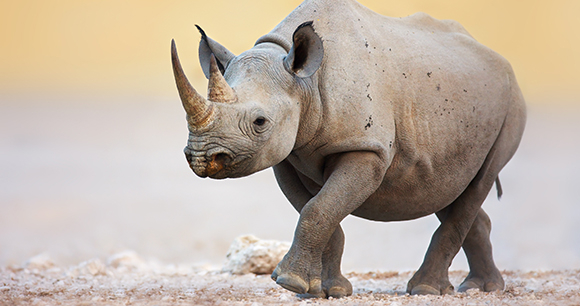 May 17, 2019
May 17, 2019Dear Humanitarian,
Today is Endangered Species Day! Our world is a richer and more beautiful place thanks to the enormous diversity of species that inhabit it, and today we are honoring a law that is vital for protecting that incredible biodiversity—the Endangered Species Act.
The UN’s Global Assessment report that came out earlier this month painted a bleak picture, projecting that we could lose approximately one million species over the next 50 years due to exploitation of species, habitat encroachment, climate change, pollution, and invasion by non-native species.
However, laws such as the ESA still give us a fighting chance to save wildlife from extinction. Under the protection of the law, 99 percent of listed species have been spared from extinction, and thanks to the ESA a number of species such as the bald eagle, grizzly bear, and West Indian manatee are on the road to recovery.
What You Can DoUnfortunately, the ESA frequently comes under attack, particularly by certain members of Congress. In recognition of Endangered Species Day, we ask that you write to your members of Congress and urge....
Be sure to share our eAlert with family, friends, and co-workers, and encourage them to contact their members of Congress, too. Thank you for all you do for animals!
Sincerely,
Cathy Liss
President, Animal Welfare Institute
- Mark as New
- Bookmark
- Subscribe
- Mute
- Subscribe to RSS Feed
- Permalink
- Report
May 17th is...

They may not be as popular as almonds or peanuts, but let’s give walnuts their due respect: they’re great for your heart, your brain, and your bones; you can incorporate them into any meal; and they’ve literally been around for almost 10,000 years. The Walnut Marketing Board established National Walnut Day in the 1950s, and it’s been celebrated on May 17 ever since. Read on for all the best ways to celebrate walnuts, because they’re so much more than just another ingredient to toss in chicken salad.
- Shell your own
Don’t you find that food tastes better when you’ve worked a bit for it? Buy some walnuts still in their shells, grab a nutcracker (or a hammer), and get going. Bonus: it doubles as a stress-relieving exercise!
- Gift ‘em
Candied walnuts are an impressive gift that couldn’t be easier to make. In a skillet over medium heat, melt butter and sugar, and add any spices you want (we like cinnamon and ginger). Toss the walnuts in this mixture until they’re coated; then spread them out on some parchment paper to cool. Pack them into small jars, distribute among your friends, and pretend you're Martha Stewart.
- Make a walnut cocktail
Nocino is an Italian liqueur made from unripe walnuts. It’s nutty, sweet, strong, and a bit spicy—in other words, it will warm you right up. The Italians drink it on its own as a digestif, but it also pairs very well with brown spirits. We think it’d be a great addition to a Manhattan.
- Kitchen chameleons
These versatile nuts can be eaten raw or toasted, pickled or candied, added to a wide range of cereals, baked into pies, cakes, and cookies, tossed onto ice cream, used in pesto and other sauces, and processed into oils and nut butters.
- More than just food
Ink still made today from walnut husks is said to have been used by Leonardo da Vinci and Rembrandt for writing and drawing; shells are crushed for use as landscape mulch; and the abrasive quality of ground walnut shells also makes them useful in cleaning products.
- Wall-to-wall
Especially abundant in the U.S. and China, walnuts are also cultivated in Iran, Turkey, Mexico, Ukraine, Chile, England, Slovenia, and Romania.
- Healing properties
Walnuts have been used to reduce inflammation, heal wounds, and freshen breath
- Long-lasting
A walnut tree can live to be 250 years old
- Walnuts are a nutritional powerhouse
Walnuts are the only nut with high amounts of omega-3 fatty acids. If you eat just a quarter cup, you’ll have more than 100% of the daily recommended amount. These omega-3s contribute to your brain function, heart health, and reduce inflammation. Walnuts are also a good source of Vitamin E, magnesium, and antioxidants. Plus they’re high in protein and fiber, so they make a great snack.
- They’ve got some (ancient) history
Walnuts are the oldest known tree food—they date back to 7000 B.C.! The walnuts we eat today are known as English walnuts, but they actually originated in ancient Persia where they were considered a delicacy for the royalty. They first moved through the Asian and Middle Eastern world by trade along the Silk Road, and then further via sea trade. They eventually made it to England, where merchants would sail them to ports around the world, hence the “English” name.
- They’re versatile
Walnuts are great in all sorts of sweet and savory recipes. Eat them by themselves, or chop them up and toss them in cookies, oatmeal, salads, sauces, cakes, you name it! And calling all vegetarians/vegans: their texture makes for a great meat-substitute. Seriously, Google “walnut chorizo.”
The main thing is just to "Eat and Enjoy!"
- Mark as New
- Bookmark
- Subscribe
- Mute
- Subscribe to RSS Feed
- Permalink
- Report
May 15th Is...

We might not know which came first — the chicken, or the egg — but when it comes to chocolate chips and their namesake cookie, the history is well-documented, and it might not be what you think. Chocolate chips actually came after the chocolate chip cookie, and despite their ubiquity, are likely younger than your grandmother (they were first marketed in 1940!). Legend has it that the chocolate chip cookie was a happy accident, born when baker ran out of baker’s chocolate and opted for semi-sweet instead.
The recipe spread like wildfire, and after a few years of selling their semi-sweet chocolate bars with a chopping tool (for easy chunking of the bar), Nestlé went one step further by introducing chocolate “morsels” to the world. With such a history, and with so much mass appeal, it’s no surprise that this kitchen delight deserves celebration, and that’s why, on May 15, we’ve got National Chocolate Chip Day.
National Chocolate Chip Day Activities
- Hack The Kitchen: Chocolate For Dinner
Most chefs know how to use tried-and-true flavor combinations to great effect, but the best chefs create new combinations altogether. Try using chocolate chips in a dinner recipe for a real challenge. If you’re looking for a place to start, you might consider trying the mole recipe in the section below!
- How Big Can You Bake It?
You probably won’t approach the world record, but National Chocolate Chip Day is the perfect occasion to try your hand at baking the biggest chocolate chip cookie possible.
- Art You Can Eat
With a mix of chocolate chips, M&Ms, and some other similarly-sized chocolate candies, you’re well on your way to a kid-friendly edible art project! This can get messy, though, so it’s probably a project best suited for the kitchen!
- Mark as New
- Bookmark
- Subscribe
- Mute
- Subscribe to RSS Feed
- Permalink
- Report
TODAY Is.....

There’s nothing quite like a flaky, buttermilk biscuit paired with jam, honey, maple syrup, or butter to send your taste buds into overdrive. What better way to celebrate a long-standing Southern tradition than by commemorating National Buttermilk Biscuit Day on May 14? These flakey, carby treats emerged in the pre-Civil War era as an inexpensive addition to meals. When people realized these robust bread products absorbed the gravy on their plates better than plain bread, biscuits soared in popularity and the version that we all know and love — the buttermilk biscuit — was born. From celebrating at your favorite restaurant to whipping up a gourmet batch at home, there are ample ways one can pay homage to this Southern staple.
- Go on a biscuit quest
Rule #1: You can never have too many biscuits. In preparation for the holiday, scope out the local restaurant scene a few days beforehand to discover what kind of deals you can find. Then, on May 14, put your game face on and head over to your local Cracker Barrel to enjoy some home-style cooking, complete with mouthwatering buttermilk biscuits and flavorsome gravy. For dessert, mosey on over to Red Lobster to scarf down copious amounts of their legendary (and addictive) cheddar biscuits. Popeyes, Bojangles’, and Church’s Chicken also have tasty biscuits. Remember, the earlier you start , the more ground you’ll cover.
- Make some biscuits
Nothing, and I mean nothing, beats homemade buttermilk biscuits. If you aren’t sure where to start, there are hundreds (give or take) of recipes floating across the Internet at this very second. If you’re feeling adventurous, make up your own recipe! We’ll give you a hint: you’ll probably need buttermilk.
- Turn ordinary buttermilk biscuits into an extraordinary dish
As wonderful as buttermilk biscuits might be on their own, they can often be made even better when combined with other awesome ingredients. From exotic casseroles to scrumptious cinnamon rolls, there are heaps of unique dishes that can be made using buttermilk biscuits as a base. Get creative — the possibilities are truly endless!
- Mark as New
- Bookmark
- Subscribe
- Mute
- Subscribe to RSS Feed
- Permalink
- Report
MAY 2 is ......

Today is dedicated to the people who (we hope) made your childhood memorable — your siblings. They’ve been there for you during the good times. And they haven’t left your side through the bad (even if they created it by getting you in trouble). Of course, there were probably times where you couldn’t stand the sight of each other. What siblings don’t get into fights? Still, National Brothers and Sisters Day is the day to reflect on the best times.
We all agree about the importance of Mother’s Day and Father’s Day. But brothers and sisters know you like no one else ever will.
- Get nostalgic
Revisit special memories and moments with your siblings. Go to the places they taught you to drive. Visit your favorite childhood haunts. There’s no way to go wrong here, as long as you’re celebrating and spending time together.
- Hang out
Go out to lunch or dinner and catch up on old times. Talk about what’s new in your life and your upcoming events. Maybe this will even start a new tradition, or even a habit of catching up more often.
- Family vacation
Make a list of places you’ve dreamed about visiting, local or internationally, and start checking off your bucket list. Create memories with them that will last a lifetime.
- Family ties
Your brothers and sisters know you inside and out. If they’re older than you, they’ve been a part of your life since you were in diapers (they probably even changed a few, and for that, they deserve eternal gratitude). If you’re the older one, you’ve probably helped a sibling or two navigate through life — whether you’re intimidating their bullies or showing them a cool new trick on the swing set. These amazing bonds are what makes your relationship meaningful. Embrace them on National Brothers and Sisters Day
- Understanding
No one will ever “get” you better than your sibling. At our jobs, we have to monitor what we say because we don’t want our thoughts to get misinterpreted. With our friends, we’re allowed to be a little weirder, but we can’t be too weird in case they decide to bail on us. But this isn’t the case with your siblings. You can be as crazy as you want, and say everything that comes to mind. They know the true you — and more importantly, they’re stuck with you.
- No secrets
Remember those horrible fashion trends you participated in? All those toys you obsessed over that you would never be caught dead with today? Your siblings were there for all of it. They have the power in their hands to destroy you if they choose — and they’re being very nice by deciding not to (for the moment). As the saying goes, keep your friends close, your enemies closer — and your siblings closest. You’ll never know what they’ll reveal if you make them angry!
- Mark as New
- Bookmark
- Subscribe
- Mute
- Subscribe to RSS Feed
- Permalink
- Report
APRIL 30th is.........

In November 2011, the United Nations Educational, Scientific and Cultural Organization (UNESCO) officially designated April 30 as International Jazz Day in order to highlight jazz and its diplomatic role of uniting people in all corners of the globe. International Jazz Day is chaired and led by UNESCO Director General Audrey Azoulay and legendary jazz pianist and composer Herbie Hancock, who serves as a UNESCO Ambassador for Intercultural Dialogue and Chairman of the Herbie Hancock Institute of Jazz. The Institute is the lead nonprofit organization charged with planning, promoting and producing this annual celebration.
International Jazz Day brings together communities, schools, artists, historians, academics, and jazz enthusiasts all over the world to celebrate and learn about jazz and its roots, future and impact; raise awareness of the need for intercultural dialogue and mutual understanding; and reinforce international cooperation and communication. Each year on April 30, this international art form is recognized for promoting peace, dialogue among cultures, diversity, and respect for human rights and human dignity; eradicating discrimination; promoting freedom of expression; fostering gender equality; and reinforcing the role of youth in enacting social change.
International Jazz Day is the culmination of Jazz Appreciation Month, which draws public attention to jazz and its extraordinary heritage throughout April. In December 2012, the United Nations General Assembly formally welcomed the decision by the UNESCO General Conference to proclaim April 30 as International Jazz Day. The United Nations and UNESCO now both recognize International Jazz Day on their official calendars.
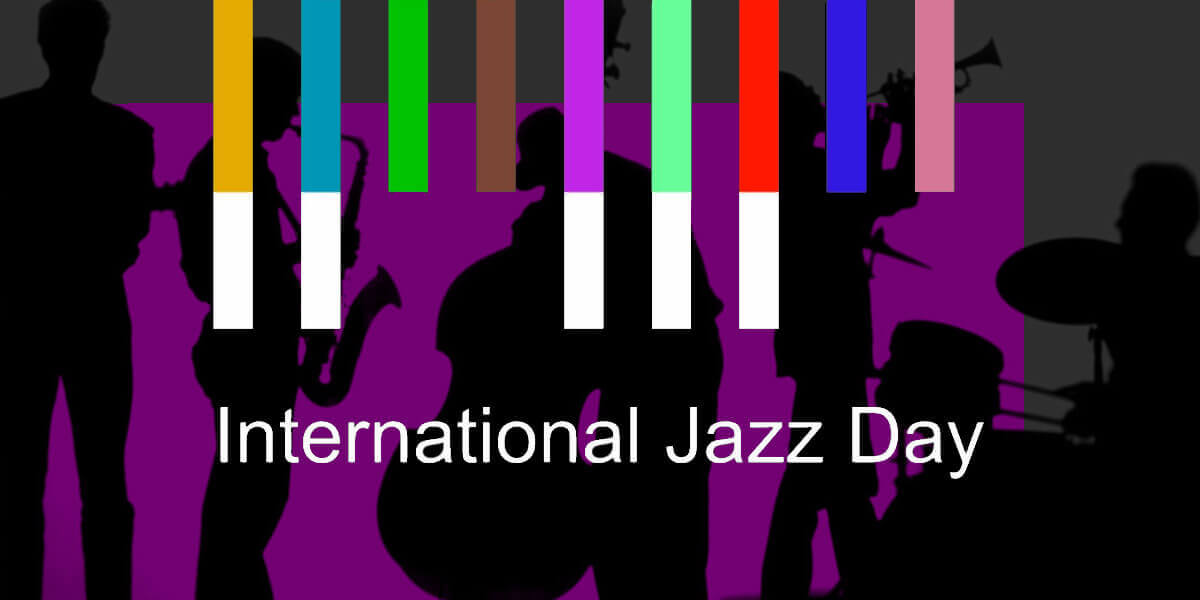
- Mark as New
- Bookmark
- Subscribe
- Mute
- Subscribe to RSS Feed
- Permalink
- Report


Marvel employees created National Superhero Day on April 28, 1995. That’s Marvel, as in Marvel Comics, the creators of “The Fantastic Four,” “The Avengers,” “X-Men,” and supervillains like Magneto, Green Goblin, and Loki.
However, as we all know, supervillains are unworthy of their own day.
Still, the idea behind superhero day is to honor those who serve and protect while fighting evil. Whether you’re a fan of the Marvel Universe or the DC Comics variety (like Batman, Wonder Woman, The Flash, or Superman), honoring heroes, real or fictional, is a worthwhile cause.
Holy holiday, Batman! Let’s get started on this…
- Throw a cosplay party
Halloween is still months away and mostly for children. But cosplay can happen anytime, and no time is better than National Superhero Day. So whether you choose a theme, like DC comic books heroes, Marvel heroes, or neighborhood heroes, invite people to come as their favorite! Look, a dinner table boasting the likes of Silver Surfer, the Huntress and Iron Man is bound to be fun!
- Sponsor a superhero film festival
Even if you’ve never wanted to don a cape and save the day, it’s awesome to watch other people do it. So celebrate National Superhero Day by streaming films like "Iron Man," "Justice League," "Logan'" or even Captain Underpants. Just make sure you have plenty of candy and popcorn on hand — and maybe some masks too for the immersion experience.
- Honor your own real-life superheroes
What makes a superhero? Usually it’s the attribute of powers, but don’t let that stop you from taking the day to thank your own heroes. You can thank an entire group, like firefighters or police officers, or honor just one person who has demonstrated fairness, courage and compassion. Make this superhero day your perfect day to honor all heroes
- Superheroes unite!
Start a debate amongst comic book fans about who's the best superhero and you'll soon find yourself in the middle of a heated argument. Batman? Some say he’s just a guy with gadgets. Who’s faster, the Flash or Quicksilver? Who’s more powerful, Spiderman or the Green Lantern?
National Superhero day solves this conundrum by honoring ALL superheroes. So quit arguing and embrace the wonderful diversity of heroes offered in this, and other, universes.
- They're real
When we consider the attributes that make a superhero, aside from special powers, they embrace truth and justice, fight evil and demonstrate courage. There are many people in our society who embrace those same values and that makes them pretty super too!
- There's a hero for everyone
Superheroes come in all colors, genders, religions, and incarnations. What’s not to love about a day that embraces an alien with a green pointy head (Martian Manhunter), a woman with wings (Hawkgirl), or a man half-metal, half-human (Cyborg)? Even Squirrel Girl has her own loyal following, and although she may not reach the status of having her own day, she is certainly a superhero.
- Mark as New
- Bookmark
- Subscribe
- Mute
- Subscribe to RSS Feed
- Permalink
- Report
Today is.....
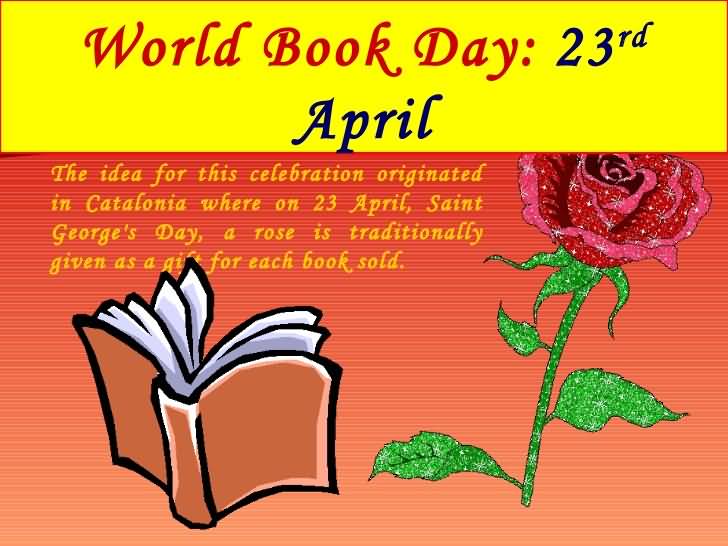
World Book Day 2019 — April 23
World Book Day, also known as World Book and Copyright Day, or International Day of the Book, is an annual event the organized by the United Nations Educational, Scientific and Cultural Organization (UNESCO) to promote reading, publishing, and copyright. World Book Day was first celebrated on 23 April 1995, and continues to be recognized on that day. A related event in the United Kingdom and Ireland is observed in March.
We love books, and our friends at UNESCO agree. The United Nations Educational, Scientific and Cultural Organization proposed World Book Day as a day of celebrating the joy of reading for enjoyment.
One hundred countries observe World Book Day, and why not?
Children who regularly read for enjoyment have higher test scores, develop a broader vocabulary, increased general knowledge and a better understanding of other cultures than their non-reading counterparts. Whether you read traditional paperbound books or turn to your Kindle/iPad/whatever, reading’s a passport to this and many other worlds.
So celebrate with us on April 23! Here’s how to harness your inner bookworm — and maybe get a free book.
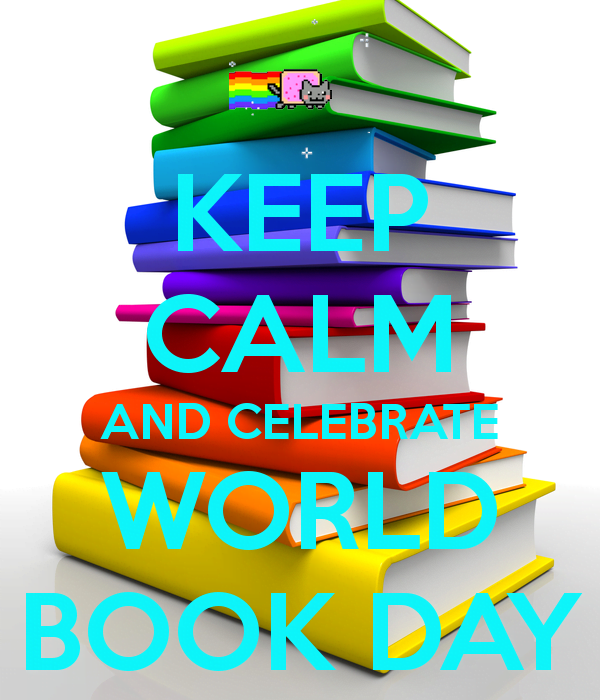
"I downloaded AARP Perks to assist in staying connected and never missing out on a discount!" -LeeshaD341679






















